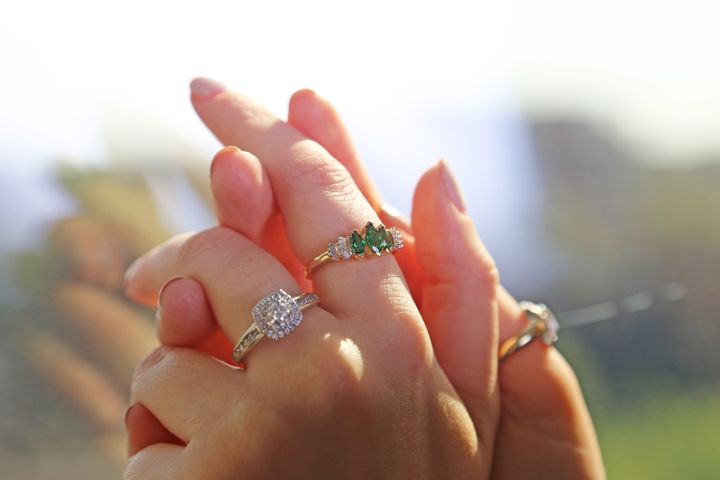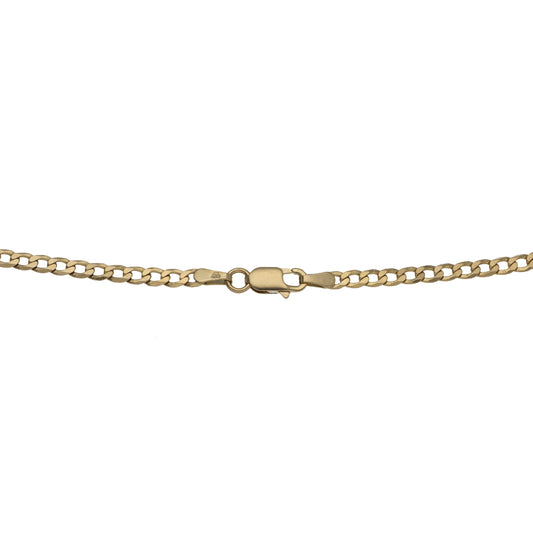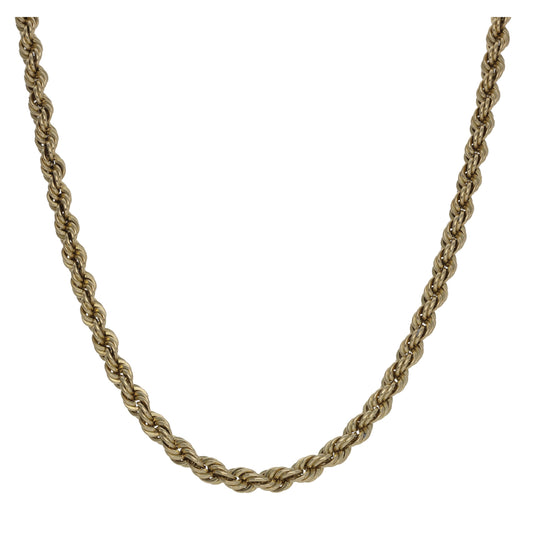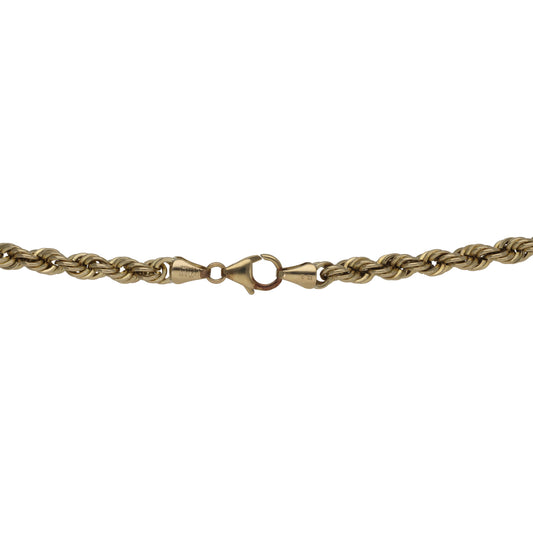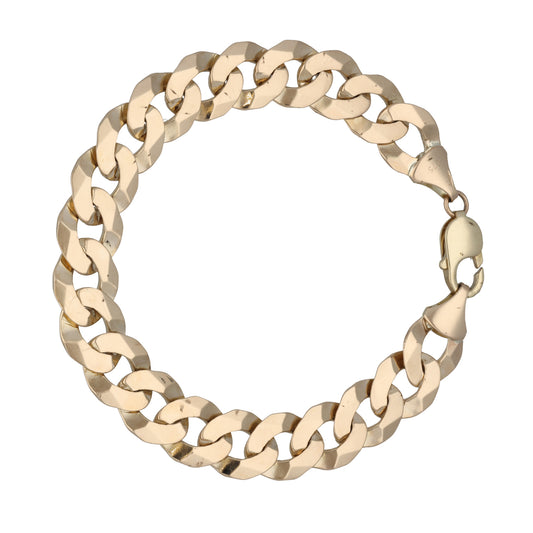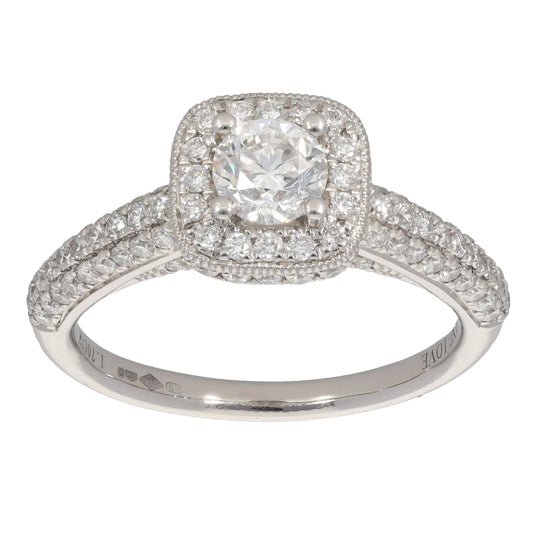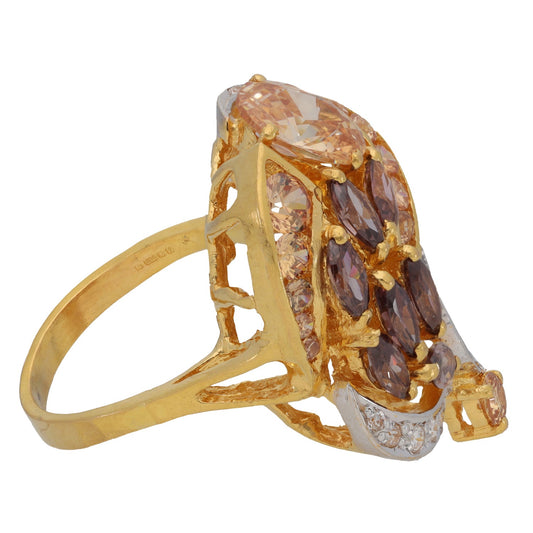If you’re planning to propose this Valentine’s Day, it’s likely that you’re on the hunt for THE ring. Searching for an engagement ring for your partner is one of the most exciting shopping experiences you’ll have, even if finding the perfect one can be a bit of a challenge. Most would consider it very important to find a ring which not only suits your partner’s tastes, but their moral values too.
Of course, taking note of the impact we have on the planet as individuals has become a normal part of everyday life in recent years. You may opt for toiletries which aren’t tested on animals, make an effort to recycle as much as possible, or try to avoid buying food which has been imported from a long distance. But have you considered the impact of an engagement ring? As one of the most important, thrilling and potentially costly purchases of your life, it’s certainly worth making sure you’re able to find the perfect ‘small footprint’ engagement ring.
Unfortunately, we’re not just talking about the natural resources used and CO2 emissions when we talk about our ecological footprint. In some countries the mining and production of diamonds and precious metals has caused a devastating number of deaths due to the corruption, violence, mistreatment and civil war that can arise within a country that has these valuable natural resources. The reasons for these social and ethical pitfalls in the industry are complex, and while they’re improving on the whole, it’s still important to remain vigilant about where you buy from. Here’s why:
The impact of mining precious metals
Precious metals used in engagement rings, such as gold and platinum, come from ore in the ground and must be mined. While we tend to have a romanticised notion of individuals panning for gold along a creek, today’s reality is rather different. Sadly, some gold comes into the supply chain from areas of conflict and corruption. Local communities and miners can suffer terrible human rights infringements, violence and even death.
What’s more, heavy machinery, explosives, water jets and chemicals are used to extract precious metals and other elements from the earth’s crust. This causes problems for both local communities and wildlife due to destruction of land, contamination of waterways and chemical pollution.
Some countries have rules in place which help to mitigate these harmful effects, and which require the mining company to restore the mined area so that it can be reclaimed by local wildlife. In some areas of the United States for instance, reclaimed mining land has been successfully used for ranching and farming.
Blood diamonds
Diamonds have always been revered for their brilliance and longevity, and are said to represent everlasting love when presented as part of an engagement ring. Sadly, this is in stark contrast to the realities of some diamond-producing areas. While the problem is not as bad as it once was, blood diamonds are still funding armed rebel movements and are produced by forced labour. The impacts can be devastating for some communities.
The general public have been largely aware of the blood diamond problem for a number of years now, and steps have been taken to improve the ongoing situation. Customer knowledge and demand for ethically-sourced diamonds has made a positive impact; It’s estimated that just 5% to 10% of diamonds are now traded illegally. Around 2003, this figure stood at 25% - so it’s safe to say that something is working. However, the fact that blood diamonds are still finding their way onto the market remains a concern for many consumers, and understandably so. Buying an engagement ring should be an exhilarating experience – not one that leaves you feeling down in the dumps!
The Kimberley Process Certification Scheme
This big reduction in the illegal trade of diamonds has mainly been down to the Kimberley Process, which was launched in 2003. This certification system helps to track and confirm where a diamond has come from on an international scale. This has allowed both diamond jewellery sellers and buyers to make more informed choices, and has made it harder for illegally-gained diamonds to find their way onto the international market.
In recent years, loopholes in the Kimberley Process scheme have come to light, and unfortunately this is how blood diamonds continue to appear. There’s no way to tell which diamonds have been produced in a conflict situation as certificate tampering is common. The certification is still paper-based for practical reasons; diamonds can travel via many countries as they move through the supply chain. Additionally, some poorer nations who are part of the diamond trade may not have the resources or infrastructure to work digitally in remote mining areas.
The Responsible Jewellery Council
In addition to law changes and certification systems, industry bodies like the Responsible Jewellery Council help companies all along the supply chain to adhere to strict social and environmental standards for both precious metals and diamonds. The council is made up of 14 organisations which represent a cross-section of the industry, including well-known names such as Tiffany & Co and Cartier.
By aiming to regulate and improve the whole supply chain from beginning to end, the RJC are helping to close certain loopholes whereby conflict materials can enter the market. Both large and small businesses can be certified, from large mines, to independent goldsmiths, to retail jewellery stores. Regulatory bodies such as this are helping to tackle the larger problems and give consumers more peace-of-mind about their purchases.
How to find an ethical engagement ring
Although conflict diamonds and precious metals make up a very small percentage of what is actually sold, it can be hard to find an engagement ring which is 100% guaranteed conflict-free. This is because there’s no way to tell if paperwork has been tampered with somewhere down the line. Buying a diamond remains a bit of a lottery where ethical sourcing is concerned, but as this is a known issue potential solutions are being implemented, as we have seen above. In the meantime, what are the options for consumers?
Some jewellers in the USA are now offering lab-grown diamonds, which can be unrecognisable from the real thing. They have the same chemical make-up, but are yet to be embraced by consumers due to their ‘man-made’ connotations. As the technology which allows lab-grown diamonds is relatively new, they are yet to be available everywhere and can be more expensive than the real thing.
One of the only ways to ensure you are buying ethically is to avoid creating demand for new diamonds and precious metals in the first place. This doesn’t mean opting for a non-traditional engagement ring made of something else, but it does mean considering pre-owned pieces. Buying an antique, vintage or pre-owned engagement ring may not have crossed your mind, but in doing so you are not creating any demand, and are therefore not unknowingly funding violence and crime. What’s more, you’re likely to get far more for your money.
Engagement rings are designed to be a happy, once-in-a-lifetime purchase, and will last forever with the proper care. For this reason, they are well suited for resale and tend to outlast their original owners. There is a huge array of unique and beautiful engagement rings out there which can be given as they are or modified to your specifications if you have something specific in mind. As jewellery like this tends to keep its condition and value easily, there’s certainly no need to create demand for new materials. What’s more, shopping for a second hand ring will certainly give you a much wider choice of styles and designs, thus giving you better odds of finding THE ring on your first look!
Here at HandT - Shop Online we have a wide range of rings available, all of which have been professionally inspected, cleaned and refurbished to an as-new standard. All pieces come with a 1-year warranty and a certificate of authenticity. Browse our brilliant and unique selection of pre-loved rings here – our jewellery is sourced from auction houses across the UK by our experts to ensure quality and choice. Our selection of available rings is changing all the time, so keep checking back if you can’t see exactly what you want.
Proposing to your partner (or being proposed to) is certainly a big highlight of anyone’s life. It’s important to be happy with your choice of engagement ring on an ethical level, as well as an aesthetic one. This is so that it can be fully enjoyed as humanity moves toward a more sustainable and more peaceful future.



